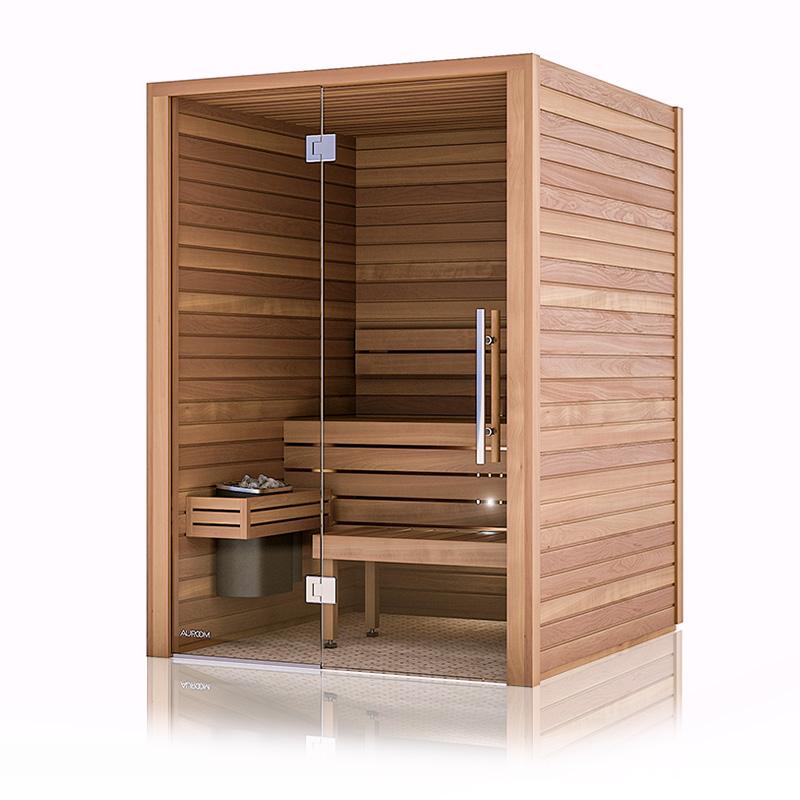Traditional Sauna - Questions
Table of ContentsGetting The Traditional Sauna To WorkTraditional Sauna - An OverviewNot known Details About Traditional Sauna Some Known Facts About Traditional Sauna.What Does Traditional Sauna Do?
Energy savings is something to think about for individuals that prepare on utilizing their sauna frequently. For a standard sauna, bathers normally need to wait for 30-40 mins for the room to preheat before getting in. Infrared saunas, on the various other hand, typically reach their excellent temperature level in about 15 mins.That suggests that in an infrared sauna, bathers can start enjoying their sauna quickly. One difference in between both kinds of sauna that is frequently ignored is the social experience. Typical saunas are normally big enough to fit several people and enable socializing. Infrared saunas are usually smaller sized in size, providing even more of an exclusive escape and less of a social experience.

Try a sauna today and find several of the outstanding advantages for yourself!.
The Main Principles Of Traditional Sauna

Factors such as heat resistance, wanted level of detoxing, and total wellness needs to be taken into consideration when deciding which sort of sauna to make use of (Traditional Sauna). Infrared saunas are a sort of sauna that use infrared light to heat the body directly, instead of heating the air around the body like traditional saunas

The temperature in an infrared sauna is normally less than in a standard sauna, with temperature levels ranging from 120F to 150F. Infrared saunas offer an array of benefits that make them an appealing alternative for those aiming to improve their wellness and health and wellbeing. Some of the advantages of infrared saunas consist of: Infrared saunas use lower temperatures than traditional saunas, which can make them more comfortable for those that locate heats tough to tolerate.
Some Known Details About Traditional Sauna

The heat created by infrared saunas can help to increase blood circulation and improve blood circulation. Infrared saunas have actually been revealed to assist lower anxiety and promote leisure.
With their reduced temperatures, deep penetration, and series of health advantages, infrared saunas are a wonderful method to unwind, unwind, and enhance your overall wellness. Standard completely dry saunas have actually been around for centuries and are click here now still preferred today. They are usually heated up with wood, gas, or power and have low humidity degrees.
The Main Principles Of Traditional Sauna
There are several benefits to using a traditional dry sauna. Here are a couple of: Relaxation: The high temperature level and low moisture in standard dry saunas can assist kick back the muscular tissues and minimize stress and anxiety degrees. Detoxification: Sweating in a sauna can help eliminate contaminants from the body, which can improve general health and wellness.
When it concerns saunas, there are two main sorts of heating methods: typical and infrared. Standard saunas utilize warmed air to warm the body, while infrared saunas make use of infrared radiation to penetrate the skin and heat the body from within. One of the major distinctions in between the 2 approaches is the sort of warmth they produce.
Traditional saunas warm the air, which after that warms the body via convection. Infrared saunas, on the other hand, warm the body directly via radiation.
In terms of energy performance, infrared saunas are normally extra reliable than typical YOURURL.com saunas due to the fact that they need less power to operate. They additionally warm up much more swiftly, so they can be utilized for shorter sessions. When it pertains to the impacts on the body, both sorts of saunas have been shown to have advantages.
The Ultimate Guide To Traditional Sauna
Infrared saunas have actually been revealed to have similar advantages, along with potentially aiding with detoxing, skin health, and immune function. On the whole, the selection between a typical or infrared sauna boils down to individual choice and specific demands. Conventional saunas may be better for those that choose greater temperature levels and an extra extreme sweat response, while infrared saunas might be much better for those who desire a more mild and reliable heat therapy.
Both sorts of saunas supply special advantages and downsides that should be considered prior to choosing. The selection in between an infrared sauna and a typical completely dry sauna greatly this post depends upon individual choice and the preferred benefits. Those that favor a more comfy, reduced temperature environment may choose an infrared sauna, while those who are seeking intense warm and a standard sauna experience might prefer a typical completely dry sauna.
Right here are some security pointers to keep in mind when using infrared and typical dry saunas:: Saunas can trigger too much sweating, leading to dehydration. It is very important to consume lots of water before, during, and after sauna sessions to remain hydrated.: It is suggested to limit sauna sessions to 20-30 minutes to avoid overheating and dehydration.